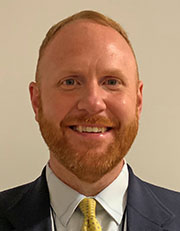
There’s the smuggling, dealing, buying and using of drugs, and then there’s a whole other end of it, quite literally.
And Genesee County officials — including from law enforcement, emergency management, health and mental health departments, Genesee-Orleans Council on Alcohol and Substance Abuse, and administration — are looking into a way that measures just what types and the amounts of drugs being consumed in the largest areas here.
To do that, they're going to test wastewater flowing through treatment plants in Le Roy and Batavia.
The cost to test at the two sites is $1,000 per month per site, and Public Health Director Paul Pettit said it's a worthy investment to collect the data on a weekly basis.
“And essentially, this is a little different than the wastewater analysis we're doing in-house. This is for chemicals. So this is looking at fentanyl, methamphetamines, cocaine, nicotine, they're also in the process of adding xylazine into the analysis that they could do. So when you look at the different types of drugs out there, it's kind of an expansive list that they're able to track and monitor on a weekly basis, we'd be able to see the different trends,” Pettit said during the county’s Human Services meeting Monday. “So, you know, again, in the wastewater, if there's an increase, that would show that we'd be able to track and see what's going on within the communities that we're looking at, and be able to use that information within the health department, within different agencies that are addressing these issues in our community.”
The committee had tabled a prior vote on the $1,000 bid from Biobot Analytics Inc. until legislators had more details about the wastewater analysis program and what data it would provide to help decrease drug use. The money would come from opioid settlement funds (See related story) that were awarded to the county. The Human Services and Public Safety committees each delved into ways the funding could be used to evaluate municipal wastewater plants, Pettit said.
Legislative Chairwoman Shelley Stein asked if there’s a plan to expand this program into other areas.
In a word, yes.
“So we looked at our two larger population centers as the way of that focus and start to see how it goes. This type of approach is new, it's not really been used at all to track these types of things at this point. So the idea was to start with (Batavia and Le Roy) to see what kind of information we're getting out of it, see how valuable it is, and then decide from there about extending it further, and expanding into some of our other municipal wastewater plants,” he said. “What else do we have here, Darien, Elba? We could also do Attica too because it's right on the border. So I think it could be another four potentially.”
Xylazine, typically used as a horse tranquilizer, is the latest drug out there, known to be in Philadelphia, with the threat of moving closer to New York and Genesee County, he said. Drug dealers cut that into drugs as is done with fentanyl, but it reacts differently, “so Narcan doesn’t touch it,” he said.
“So even if you were overdosing and having issues, Narcan would work with the opioid itself, the fentanyl, but it would not touch the xylazine,” he said. “And then maybe we have a fatality; unfortunately, that may result. This is a passive way where we can monitor, obviously through wastewater, because we don't see really the true scope of what's going on when we just look at overdoses per se. Unfortunately, this is the amount of drugs we're seeing in the system at any given time, but then you start seeing spikes, we can use that for public information.”
The $1,000 a month times two sites for up to three years with this first contract is “a lot of resources,” Legislator Marianne Clattenburg said. Especially when it’s “to look for a problem we know is already here.” Her central question has been more focused on students than on wastewater.
“When will we see education back in schools?” she said. “For a while, I think it used to be much more rigorous.”
Pettit agreed and said there should be more education on the topic. Part of the Opioid Task Force’s job has been to have school representation at its meetings, he said.
The Batavian asked Pettit after the meeting if a one-year trial would be long enough to capture trends, given variables such as holidays, weekends, and changing seasons. He agreed that certain factors can play a role in changing data and that the contract is for three years, which should be helpful to collect at least enough data to begin to spot trends and see if it’s a worthwhile effort. However, if the program leaders believe it’s not leading anywhere, they have options.
“We’ve got to start collecting some data, and they start to build what that looks like. And then, once we get enough, we can start seeing the trends. So we'll establish a baseline,” he said. “We can stop at any point within the three-year period.”
If xylazine begins to show up in the county’s wastewater, health department officials can issue public notices to alert people that the drug is here and to be cautious, he said.
The committee agreed to pass the resolution on for the full Legislature’s vote for Biobot Analytics Inc. to provide wastewater analysis for the city of Batavia and the village of Le Roy on a weekly basis at the fee of $1,000 per month.
Photo of Paul Pettit.
